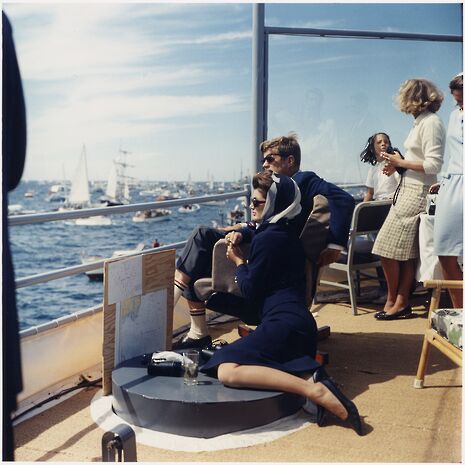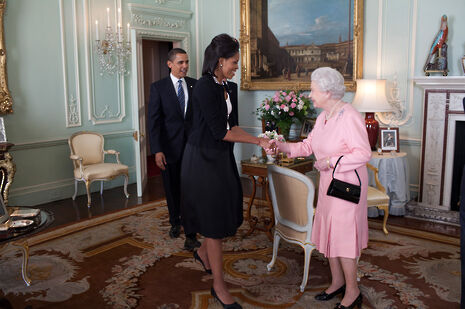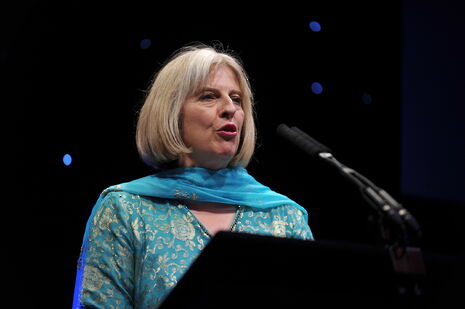Unravelling the close ties between fashion and politics
Robyn Schaffer thinks about the complicated relationship between fashion and politics

In the current climate, political debate is inescapable; from Brexit to Trump, it seems that we are stuck in a void of continual controversy and commotion. Yet interestingly, it was increasingly noticeable during the time leading up to the US presidential election that there was a sudden increase in the emphasis and focus upon the fashion choices of politicians.
While, admittedly, judging a politician’s potential for success on that basis is like judging a fish on its ability to climb a tree, there is no denying that fashion can be used as a tool to one’s advantage for both women and men. The way a politician chooses to dress automatically conjures an image and conveys a message about that person, something which is crucial to one’s success in politics. Over the years, however, some figures have stood out more than others.
Perhaps one of the most infamous political figures who was recognised as a style icon was Jacqueline Kennedy, wife of US president John F. Kennedy. Though not a politician herself, Kennedy’s crucial role as First Lady instantly plunged her into the limelight of the political world and required her to portray a certain image of herself to the public. Kennedy’s most iconic look is undoubtedly the pink Chanel suit she wore on the day of her husband’s assassination, which then became a fashion phenomenon and remains so to this day, having inspired generations of women around the globe. The pink bouclé suit, worn with a matching pillbox hat, was the epitome of sophistication and class and evoked the image of an intelligent and independent woman, yet the pink chosen by Kennedy allowed for a clever, more delicate juxtaposition.
In addition to this, Kennedy also frequently wore the designs of Givenchy and Dior, opting for simple, clean tailoring in pastels and vibrant hues. While remaining elegant and chic as the role demanded, Kennedy still experimented with off-the-shoulder tops, which have recently come back into style, and cinched waistlines and daring prints, cementing her place as one of the style icons of the political world.

What with the recent US presidential election, all eyes were on Hillary Clinton. With a high chance of Clinton being the first female president, it was no surprise that media outlets paid attention to her style choices, which she evidently used to her advantage. As a prominent figure of the political world for several decades, Clinton is certainly not unfamiliar with the task of dressing for politics, whether it be as First Lady or a presidential candidate. In more recent years, Clinton has been famed for her more minimal approach to style; as with Kennedy, Clinton can always be seen in sharp tailoring, often opting for simple pantsuits and knee-length coats.
Her affinity for American designers such as Ralph Lauren has allowed her to maintain her patriotic, all-American image while still being able to experiment with fashion in a world where it is not so important. Although less adventurous than Kennedy in her choices, Clinton has nonetheless deftly crafted a clear image for herself which is recognisable across the globe, thus demonstrating the immense power and influence of fashion, even in a realm such as that of politics.
In light of the recent increase of attention paid to Clinton, it seems impossible to ignore Michelle Obama’s relationship with fashion during the eight years in which her husband served as the President of the United States, something which has gained her particular attention and praise, corroborated especially by her appearance on the December 2016 issue of Vogue US. In this issue, the FLOTUS can be seen wearing the designs of Carolina Herrera and Atelier Versace, while in the past she has been seen wearing the likes of Giambattista Valli and Oscar de la Renta, often paired with more affordable and contemporary labels such as Self-Portrait and Alice + Olivia. Obama’s clear and keen interest in fashion allows her to reach out and relate to women who might not be so politically active but, like her, share a love of fashion, thus instantly increasing her approachability and likeability.

If we then hop across the pond, however, we are met with our very own Theresa May, who was appointed Prime Minister after David Cameron’s post-Brexit resignation. Perhaps now the most powerful woman in the UK, May has previously acknowledged in interviews the attention paid to fashion in politics and admits that it can be used as a tool to boost one’s public image. Like Hillary Clinton, May has always opted to remain on the more conservative side, if you will, in regard to her sartorial selections.
She has been a long-time loyal customer of British designer Amanda Wakeley, and can often also be seen in the designs of high-street labels such as L. K. Bennett and Russell & Bromley. In June of this year, while launching her Tory leadership campaign, May wore a tartan Vivienne Westwood suit also owned by model Cara Delevingne, with this choice of iconic British designer subtly implying her patriotism and duty to her country.

Yet it is not just females in the political sphere who have demonstrated bold style choices. Yanis Varoufakis, the former Greek Minister of Finance, has been known for his bold fashion sense, garnering attention for being one of the few male politicians to do so. Varoufakis, who has often been the subject of controversy, once turned up to meet George Osborne wearing a bright blue open-necked shirt, black jeans, leather boots and a leather jacket, defiantly contrasting the stereotypical suit-and-tie combination of the right-wing politicians he so fervently opposes.
In a world where the vast majority of politicians look relatively identical in regard to style, those such as Varoufakis remind us how fashion is a manner of self-expression and can be largely used to represent your personality, and the ability to do this to one’s desired effect is quintessential in politics. We are all aware that fashion is among the least of a politician’s concerns, but it has been proven several times that it is nonetheless a weapon which can be used to one’s advantage – fashion has the power to sculpt an image and transmit a message, which is ultimately what politics rests on
 News / Local business in trademark battle with Uni over use of ‘Cambridge’17 January 2026
News / Local business in trademark battle with Uni over use of ‘Cambridge’17 January 2026 News / Cambridge bus strikes continue into new year16 January 2026
News / Cambridge bus strikes continue into new year16 January 2026 Comment / Fine, you’re more stressed than I am – you win?18 January 2026
Comment / Fine, you’re more stressed than I am – you win?18 January 2026 News / News in Brief: cosmic connections, celebrity chefs, and ice-cold competition18 January 2026
News / News in Brief: cosmic connections, celebrity chefs, and ice-cold competition18 January 2026 Film & TV / Anticipating Christopher Nolan’s The Odyssey17 January 2026
Film & TV / Anticipating Christopher Nolan’s The Odyssey17 January 2026









